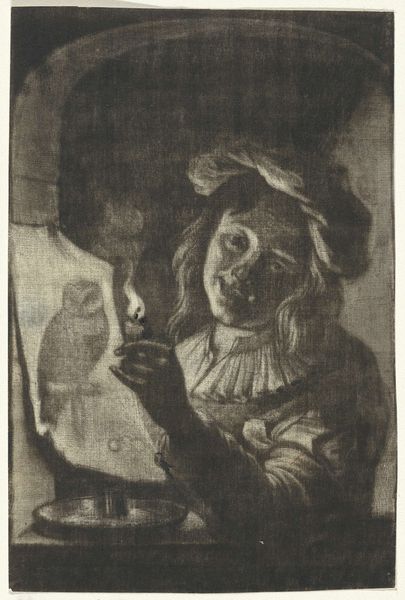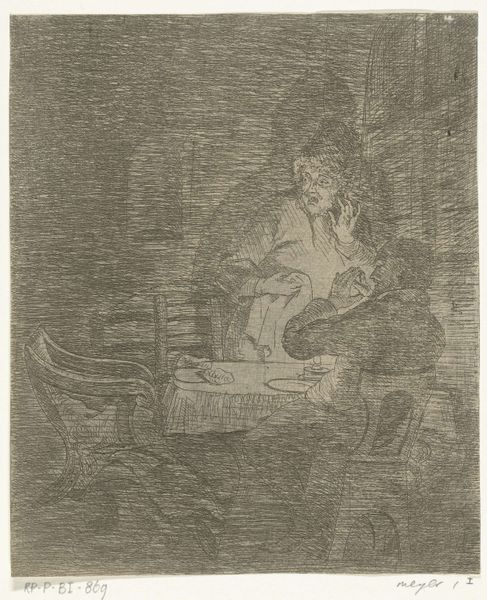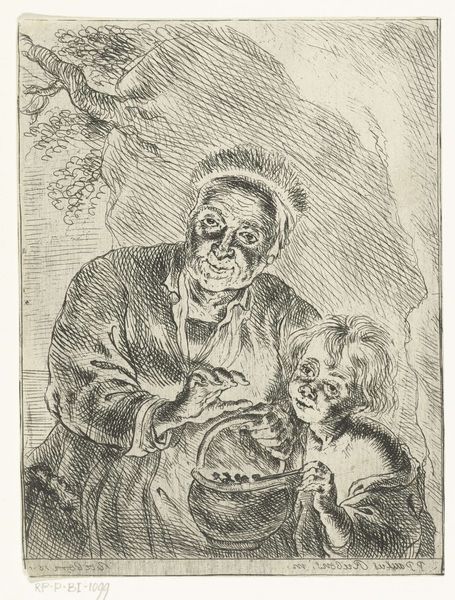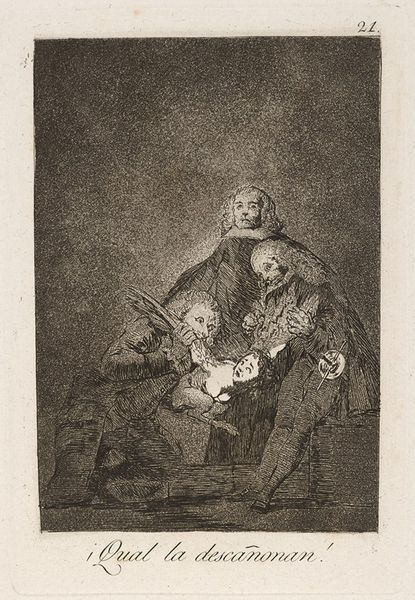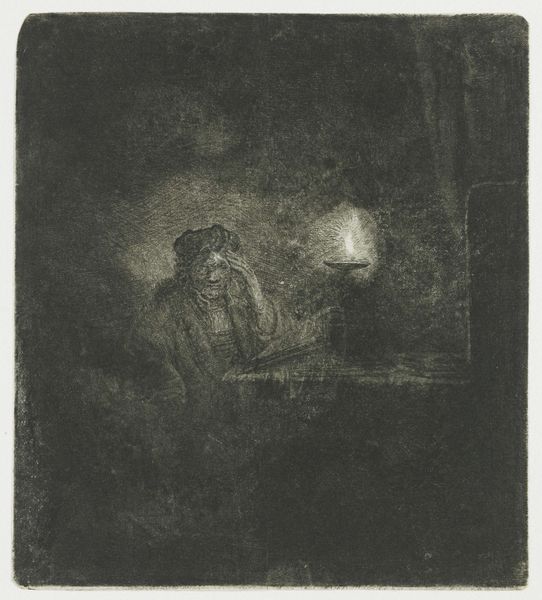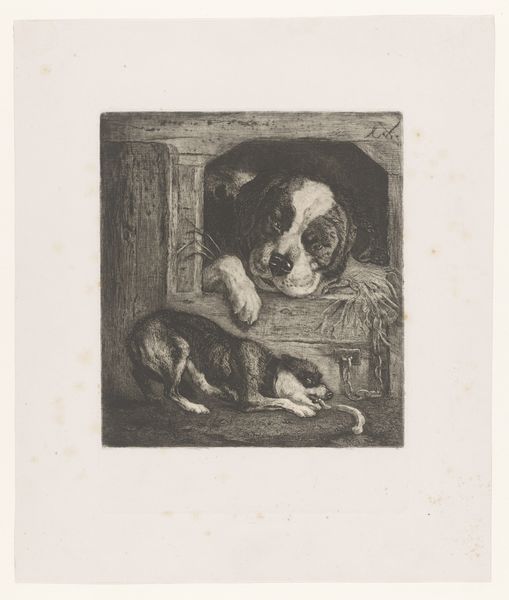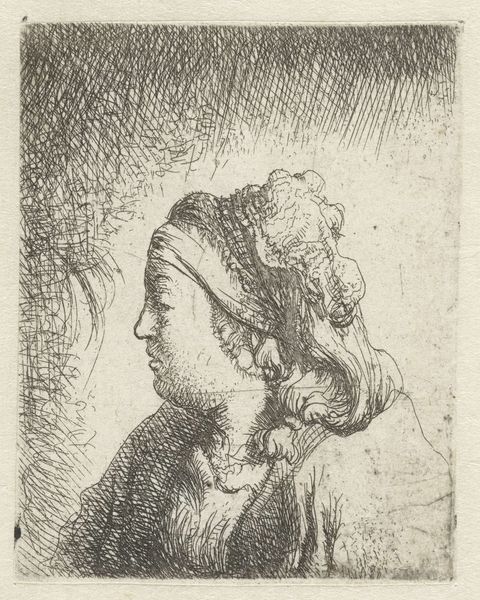
lithograph, print, etching
#
baroque
#
lithograph
# print
#
etching
#
pencil drawing
#
genre-painting
#
history-painting
Dimensions: height 155 mm, width 98 mm
Copyright: Rijks Museum: Open Domain
Curator: Looking at this print by Aert Schouman, titled "Boy with a Print of an Owl by Candlelight," which dates from 1720 to 1792. What are your first impressions? Editor: Immediately, I'm struck by the stark contrast of light and shadow, it feels almost theatrical. The owl, caught in the soft glow, looks a little menacing, even… Curator: Indeed, the chiaroscuro is quite prominent. Notice how the composition draws your eye toward the source of light and the subject—a young boy gazing intently at a print. It employs both etching and lithographic techniques. The textural variations create a palpable sense of depth. Editor: I see how Schouman positions the candle centrally as if to create a stage for the young man's thoughts as he beholds the other image, literally illuminating curiosity and perhaps mirroring the societal shift towards the Enlightenment values that promoted curiosity, study, and the unveiling of nature's secrets, symbolised by the owl traditionally associated with knowledge. Curator: Precisely, the choice of an owl also suggests wisdom and night. Perhaps Schouman meant to illustrate not only learning but also childhood wonder and interest in things still concealed in mystery or obscurity. Think about how images circulated in the eighteenth century. Editor: The accessibility of prints meant ideas reached a much wider audience than before. What intrigues me, historically, is whether such an image normalized male education—a gentle scene removed from aristocratic grandiosity—democratizing knowledge on paper while gently reminding people that darkness holds wisdom if sought under the right light. Curator: I concur that there is a democratizing sense. But look at the line, form, tone. He invites us to dwell in the possibilities and also reflects anxieties about the acquisition of knowledge or that enlightenment is often glimpsed through artificial means rather than genuine nature or fact, adding nuance. Editor: A point well taken! The deliberate shadow thus works ambivalently—beckoning knowledge and creating distance. An engaging perspective on both a boy and art's capacity to both illuminate and obscure. Curator: Yes, a truly reflective piece. A study of light, literally, as well as figuratively. Thank you. Editor: Thank you. It certainly reveals how close visual scrutiny can unearth meaningful discussions on medium, technique, the politics of dissemination, and subjective engagement all in one glance!
Comments
No comments
Be the first to comment and join the conversation on the ultimate creative platform.
